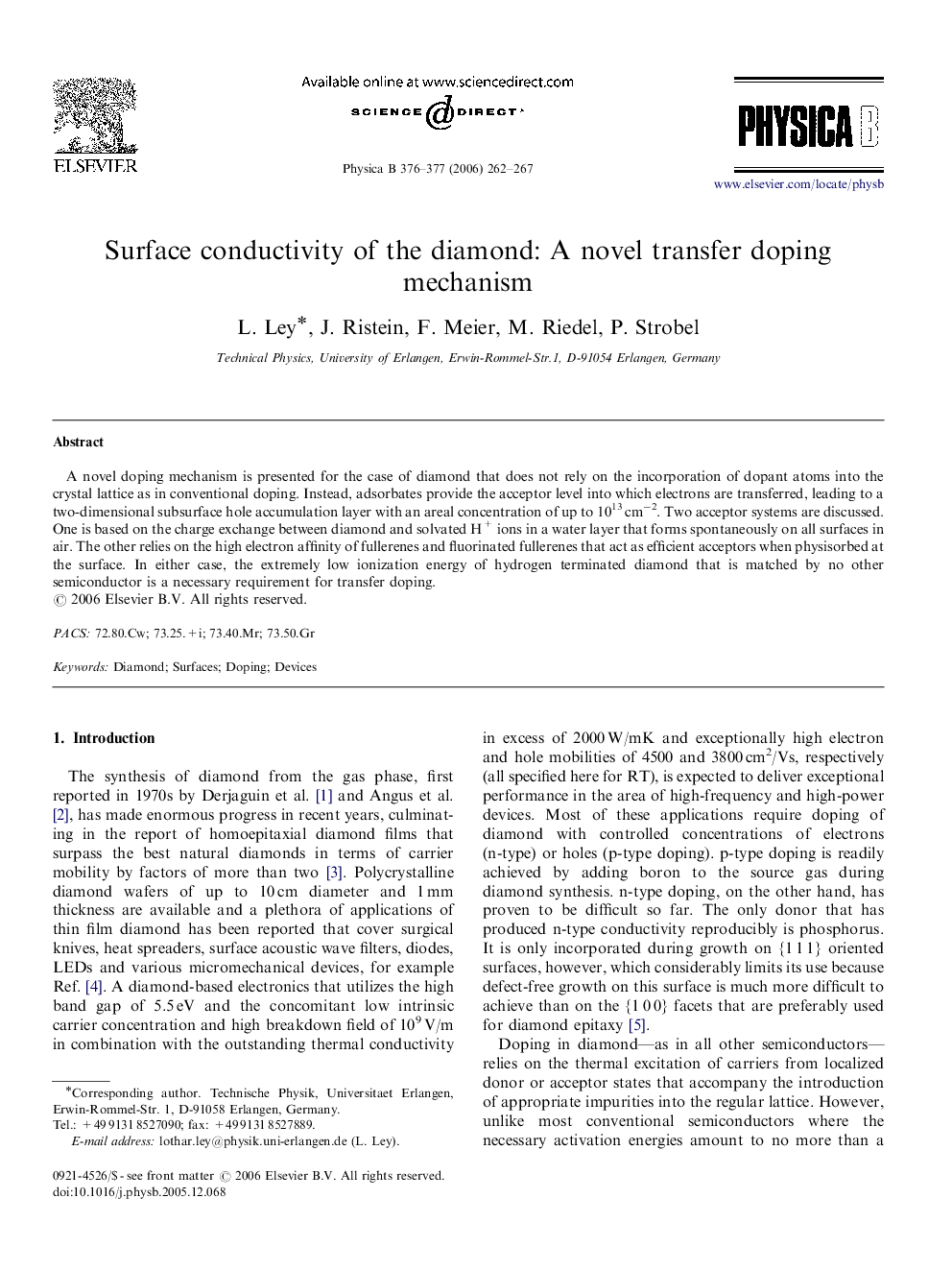| Article ID | Journal | Published Year | Pages | File Type |
|---|---|---|---|---|
| 1816699 | Physica B: Condensed Matter | 2006 | 6 Pages |
A novel doping mechanism is presented for the case of diamond that does not rely on the incorporation of dopant atoms into the crystal lattice as in conventional doping. Instead, adsorbates provide the acceptor level into which electrons are transferred, leading to a two-dimensional subsurface hole accumulation layer with an areal concentration of up to 1013 cm−2. Two acceptor systems are discussed. One is based on the charge exchange between diamond and solvated H+ ions in a water layer that forms spontaneously on all surfaces in air. The other relies on the high electron affinity of fullerenes and fluorinated fullerenes that act as efficient acceptors when physisorbed at the surface. In either case, the extremely low ionization energy of hydrogen terminated diamond that is matched by no other semiconductor is a necessary requirement for transfer doping.
